Visibility Console
The Visibility Console provides users with the single pane-of-glass experience to effectively monitor their digital operations in real time. This feature provides NOC teams and technical stakeholders with context on their technical environment at a glance, allowing them to quickly understand the health of their digital operations.
Availability
This feature is available with our PagerDuty AIOps add-on. If you would like to sign up for a trial of PagerDuty AIOps features, please read PagerDuty AIOps Trials.
View the Visibility Console
In the web app, navigate to Incidents Visibility Console.
Each user has access to their own real-time Visibility Console, which is unique to their account. The console offers several modules with global filtering, which allows users to filter modules by a combination of teams, services, and incident priorities.
Configure the Visibility Console
Modules can be added, moved, edited or removed from the Visibility Console.
Tip
Since each user has access to a personalized Visibility Console, changes and adjustments in one user’s account will not affect other users’ Visibility Consoles.
Add a Module
- Navigate to Incidents Visibility Console.
- Click Add Module and select a module.
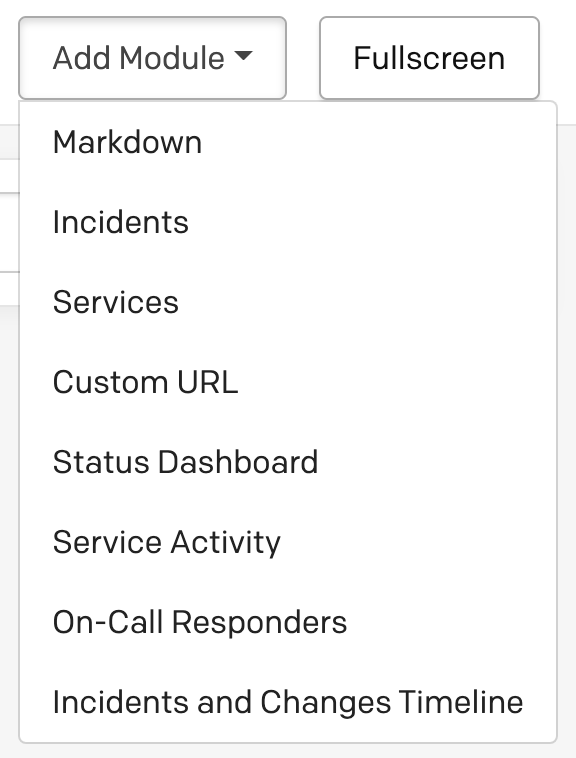
Add module
Move a Module
- Navigate to Incidents Visibility Console.
- Click a module’s icon and drag-and-drop to a different location in the Visibility Console.

Move a module
Resize a Module
You can resize a module by clicking and dragging the bottom right corner.
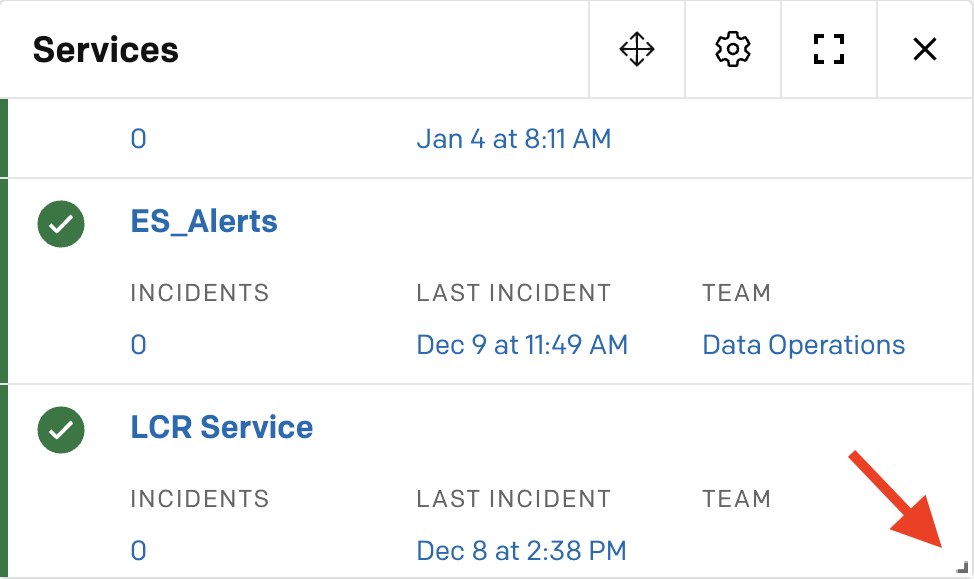
Resize a module
Edit a Module
- Navigate to Incidents Visibility Console.
- Click a module’s icon and make your desired edits.
- Click Save.

Edit a module
Remove a Module
- Navigate to Incidents Visibility Console.
- Click a module’s icon.

Remove a module
- Confirm your selection in the dialog window that appears.
Global Filtering
To show a specific group of services or incidents, you can add filter tags to the global filter bar. Click the filter bar dropdown and select your preferred tags:
- Team: The team tag will add all the services owned by a team to the group of services shown.
- Service: The service tag will add the specific service to the group of services shown.
- Priority: The priority tag will filter the incidents module to only show incidents that have a priority (priority tag only filters the Incidents module).

Global filtering
Tip
Filtering only impacts the Incidents, Services, Service Activity, and On-Call Responders modules.
Visibility Console Modules
The Visibility Console is made up of many smaller modules. Data flows into the Visibility Console in real-time and each module auto-refreshes every 30 seconds.
The Incidents, Services and Service Activity modules load the 100 most-recent results. However, we offer a number of global filters to narrow searches to more relevant results.
Markdown
The Markdown module allows users to add any text or notes to their console. This could be used to display instructions, add hyperlinks to frequently used documentation, link to runbooks, or take general notes during an on-call shift or investigation.
Incidents
The Incidents module displays a real-time list, based on the filters selected, of the most recent open incidents that have triggered. It sorts the incidents by most recent trigger time and shows the status, priority, title of the incident, the service impacted, and the assigned responders. The module can be filtered by All Incidents, High Urgency and Low Urgency.
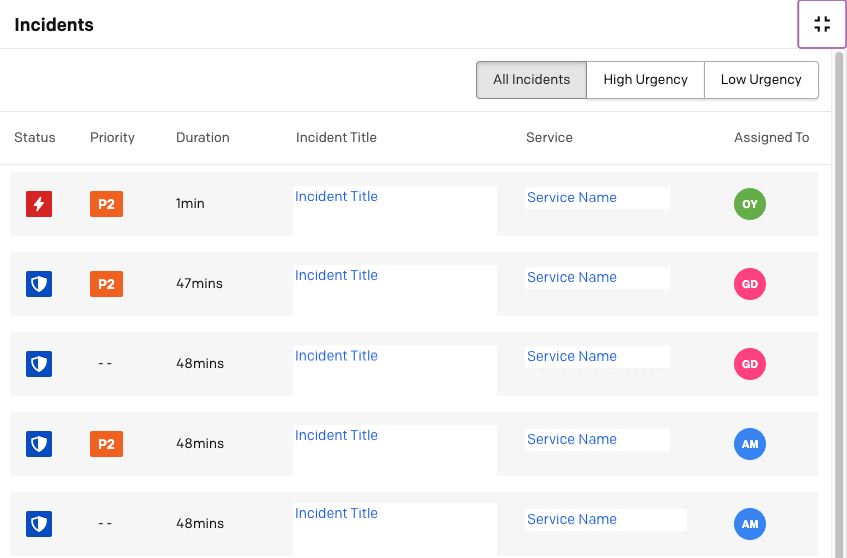
Incidents module
Incident Actions in the Incidents Module
To take action on incidents in the Incidents module, select the checkbox to the left of the incident(s) and click your desired action: Acknowledge, Resolve, Snooze, Change Priority or Add Note.

Incident actions in the Incidents module
Services
The Services module is ordered similarly to the Service Activity module and offers additional context on a service’s current state. Each service will display the associated Team (if there is one configured), the number of open incidents, the time of the last incident, and the current state of the service.
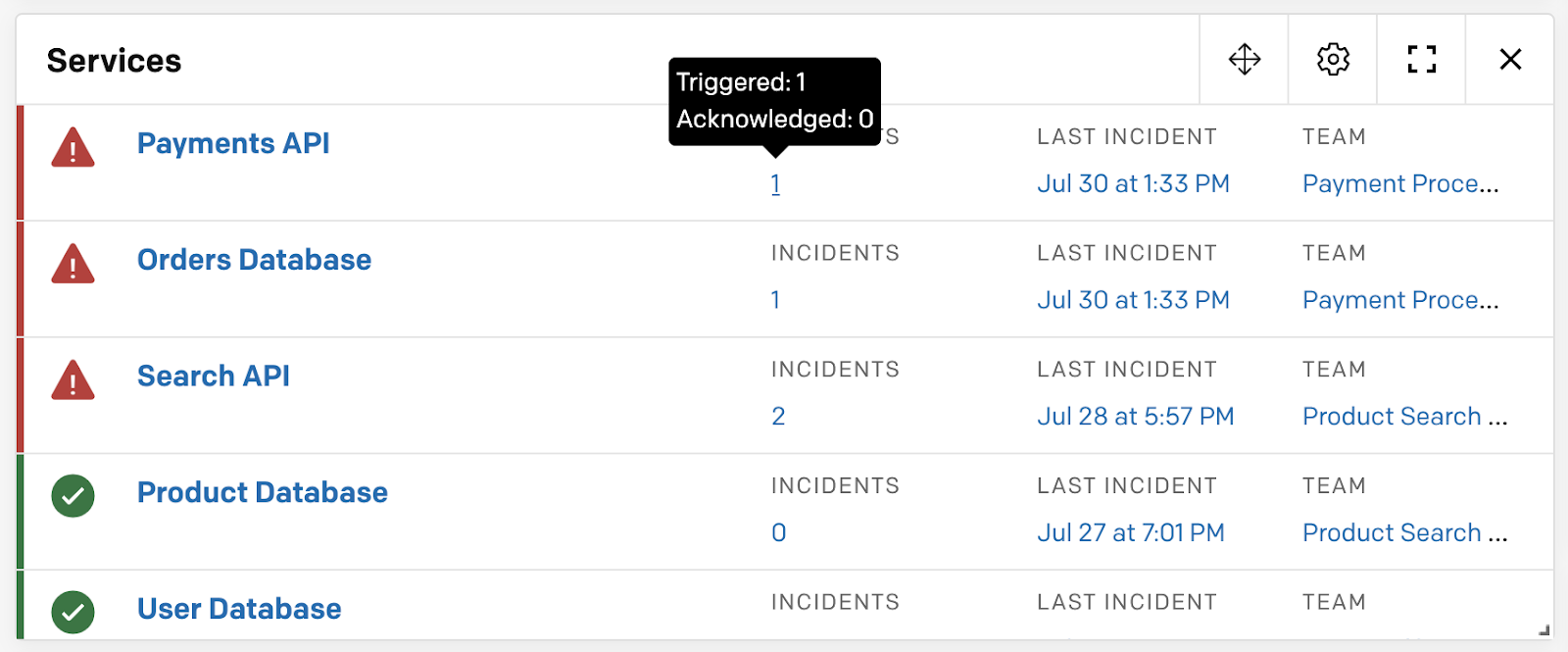
Services module
Definitions of different technical service states:
- Awaiting Response: The service currently has one or more incidents in a triggered state waiting on a response.
- Response in Progress: The service currently has one or more incidents in an acknowledged state waiting on resolution.
- Maintenance Window: The service is currently in maintenance mode or is disabled, meaning any incoming events on the service will not trigger an incident.
- Without Open Incidents: The service currently has zero open incidents.
Custom URL
The Custom URL module allows users to embed external web pages into an iframe, in order to add external monitoring to the Visibility Console. Any PagerDuty webpage is embeddable, as well as many external status pages and public dashboard URLs.

Custom URL module
Security Limitations
Not all web pages can be embedded, and the Custom URL module has some limitations in place to ensure security.
Custom URL Requirements
Please ensure the following for any URL that you would like to embed:
- You must use the
Content-Security-Policy: frame-ancestorsin the response header for the URL. - Xframe is obsolete in most modern browsers, but if you are running into this issue, you may need to set the ALLOW-FROM field.
Troubleshooting URLs That Will Not Load
Some URLs may not load for the following reasons:
- The page has restricted CSP.
- The page explicitly blocks Xframes.
- The page cannot be served over HTTPs (PagerDuty only serves over HTTPs).
Status Dashboard
The Status Dashboard module brings in some information from the Status Dashboard and adds that context to the console so users can monitor the status of their business services in one place. Click to expand a business service and show its description.
If a supporting technical service is experiencing an incident, you can select the business service’s name to view a list of impacting incidents. This ensures stakeholders and response teams are always up to date with the live status of system health.

Status Dashboard module
Tip
The Status Dashboard module is only available to accounts who have Visibility and Status Dashboard features.
Service Activity
The Service Activity module allows users to see incident activity across many of their services at once, so that they can quickly understand their digital operations health, and identify if there’s a widespread major incident. This module is ordered by most recently impacted service, and will reorder itself when new incidents trigger. It has different time windows so monitoring teams can observe their digital operations in real-time, but can also see service activity in the last 7 days, 24 hours, 12 hours, 6 hours or 1 hour. You can click each cell for more details about the incidents affecting service activity. This module can be filtered to any set of teams and services.

Service Activity module
On-Call Responders
The On-Call Responders module provides a quick and easy way to search which users are on call across all escalation policies. Use the search field or select your desired escalation policy from the list and click to view more details about the users that are currently on call.
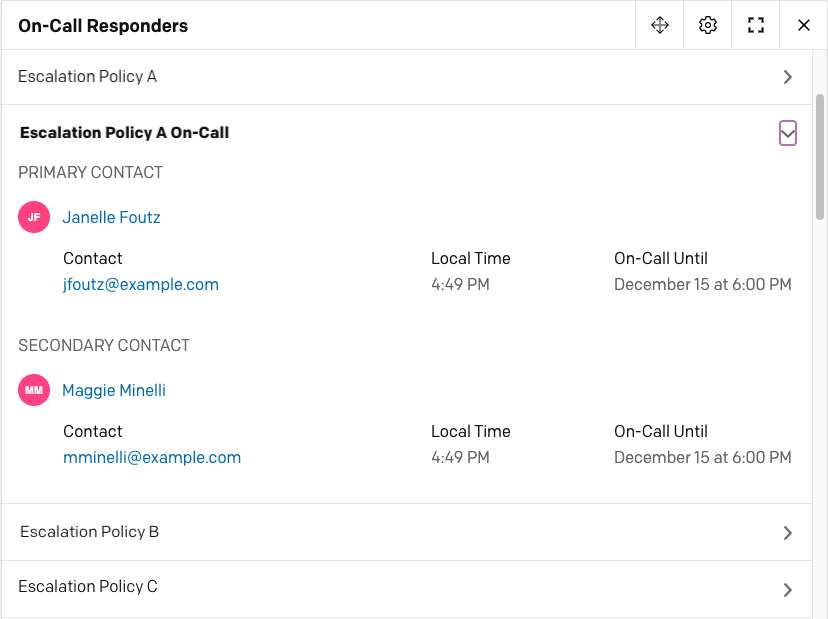
On-Call Responders module
Incidents and Changes Timeline
The Incidents and Changes Timeline module displays a timeline of incidents and change events across all services. The module can be filtered by the last 7 days, 24 hours, 12 hours, 6 hours or 1 hour.
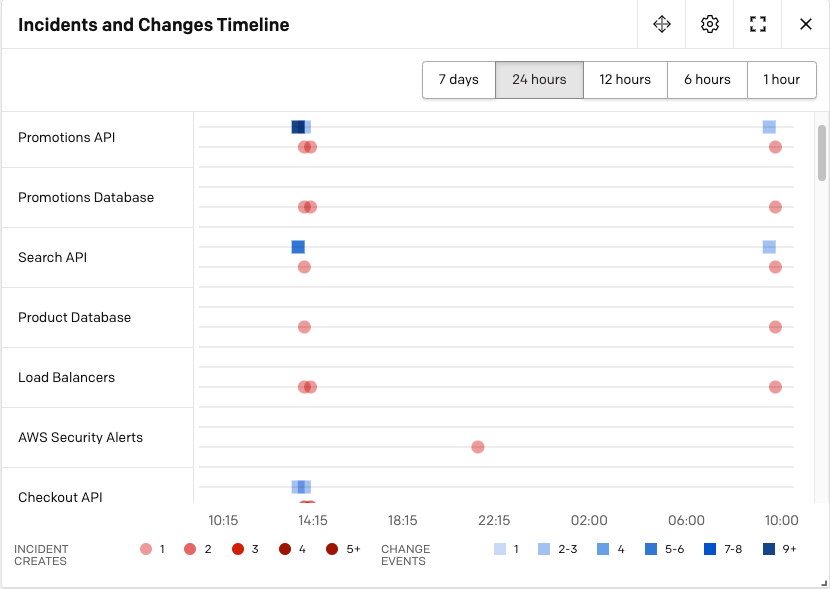
Incidents and Changes Timeline module
Updated 6 months ago
